Recently, gardeners have increasingly be paid attention to the usual decorative cereals, which can rather sourly dilute the garden composition of bright exotic plants. Green and motley herbs, forming compact and neat bushes, effectively fit into any landscape design and harmoniously combine both with blooming and simply with decorative plants. Modern landscape designers especially loved riots - a long-term cereal culture with thin leaves.
Ripeda bulbous - one of the common plant species, which has a very beautiful crown form, an unpretentious character and a low level of aggressiveness, which is expressed in the fact that the root system of this cereal grows slowly. Decorative Zlak Ryrts Boulevard, landing and care for which will not be much difficulty even at novice gardeners will become an excellent addition to any horticultural collection.
In this article, consider the general botanical description and features of the bulbous registry, we note the basic use of culture in landscape design. We give important rules for the agricultural equipment of the growing rage of this type in the open soil.
Riped bulbous: Main features and botanical description
Every year a list of decorative cereals occurring in cultural garden compositions is constantly growing. The regular use of the rapist bulbous in the landscaping of household plots is indicated by the increased popularity of natural and natural compositions, which include simple cereal and herbaceous cultures. The entire genus of rags plants is most often used as a lawn, for the framing of the puddles and herbal-shrub groups.
Rights bulbous or Arrhenatherum Bulbosum is a long-term, rhizuy, decorative grace, which refers to the genus of the French Rygrass. The natural range of growth of this plant is the territory of Russia, Asia, Europe and the part of North America. Translated from the English word RyeEGRASS denotes rye grass. Such a designation is due to the fact that this cereal grass is feed and is often used in pasture-hay animal husbandry. Rights bulbous, in particular, often in the people are determined by other names - rags bulb, downtown.
The type of decorative grace of rags bulbous is considered to be a garden or cultural, as it is mainly used in the household sections. Other varieties of this feed creek can be applied in agriculture and as part of the other grass for lawn.
DISCOUNT OF RIGHT BOOLBON:
- Rights Boulevard is a herbaceous multi-year cereal, which refers to the genus of Russian. Sometimes you can meet another name for this grass - rags bulbous variages, which is associated with the presence of light strips along the narrow leaves of the plant.
- The root system of this decorative cereal is a shallow superficial rhizome. A peculiarity of the richarse of this type can be noted the fact that small seals or bulbs are formed on the rhizomes in the rhizomes - clubnelluca. It was because of this fact that the scientific botanical name of the bulbous rapist appeared.
- The volatile rags is a loose and compact bushy, which reaches approximately 25-30 cm in height, more rare instances up to 50 cm high. Typically, rags can grow such dimensions in the absence of regular trimming, which is mandatory to maintain a beautiful form.
- One of the main decorative features of the plant is a shrub shape - it is compact, very neat, and if the shape of the ball can be achieved with proper trimming.
- From tightly pressed to each other, the tubers grow narrow, long, linear shapes of the bulbous ricon leaves, which are also considered the decorative value of culture. The width of the leaf can be about 0.5-1 cm. To the vertex itself, the sheet plate is narrowed and sharpened. The surface of the leaves slightly rough and silky.
- The coloring of the leaves of the righteous of the bulbous light green with longitudinal white stripes, which is why this type of decorative creek is often called rags bulbous variages.
- In approximately in June or in July, the plant can lose its decorativeness: the bustice is significantly rare, the leaves become green. However, with timely pruning, after a week, rags, the bulbous will again delight the foral appearance and the neat form of the crown.
- At the end of May or in early June, a plant can be observed or, in other words, the release of a stem with a future counterpart.
- The bloom itself comes around at the end of June or in early July. At this time, spikelets appear on the top of the stem, which can be collected in an empty or compressed pan.
- Decorative grain rags Boulevard is a popular plant for landscape design, which is explained quite simple. The culture is unpretentious in conditions of cultivation and care. In addition, the stern climate is perfectly tolerated, as it belongs to the climatic zone 4, where you can include the Moscow region, almost all areas of Russia, as well as the Northern and mountain regions of Scandinavia. The plant withstands frost to minus 30-35 degrees.
Using a rabbone rag in landscape design
Today, gardeners have a simply a huge assortment of various ornamental plants that will help create bright and original garden compositions. Rights bulbous as a decorative Zlak in recent years is a frequent guest in the household sections. The popularity of this culture to explain quite easily - the plant has high decorative qualities and unpretentiousness in care, which is the main factors of choice for many gardeners. Modern landscape designers include rags bulbous in the most different compositions, creating quite bright and spectacular groups and plots. Next, consider the most common options for using a ray of this kind in landscape design.
- First of all, it is worth noting that the bulbous rags are used by gardeners for landing by groups on the background of lawn. The motley leaves of this decorative creek will be beneficial to shade the bright greenery of the lawn.
- In addition, rags bulbous can be used as a curb plant. Thanks to a compact and beautiful shape, the cooks this plant creates smooth and dense framing of garden tracks and borders.
- You can grow rags of this species along with various bright colors, for example, with roses, peonies, daffiders, tulips. Sedna leaves of the ricon will be a beautiful background for colorful inflorescences.
- Many landscape designers recommend landing raspberry seedlings in alpine rols and mix bellows, in which you can combine this cereal with a variety of decorative cultures. Riped bulbous can be combined with hosts, different coniferous plants.
- It is possible to plant this herbaceous grace along the water bodies and artificial ponds, as the bulbous rags are considered a moisture-loving plant.
- Due to low growth, which rarely exceeds 25-30 cm, this plant is very often gardeners planting in garden pots and containers. In such containers, you can also create whole compositions, including in them except the ricon and other plants. In the future, such pots are packed throughout the site or placed on the terrace and balcony.
As can be seen from these options, the bulbous rags is a valuable decorative plant, which harmoniously fits into a variety of compositions. It is possible to more clearly see all the advantages and the vivid qualities of this plant on the Boulevard Rapil Photo Suggested below.
Repreciation of the raspberry rapid: the most common ways
The cultivation of the rapist bulbous, as well as other varieties of decorative cereals, is not much difficult. These are quite unpretentious plants and perfectly carry the most different conditions of growth. It is enough to plant this plant once at its site and in the future you can multiply the cereal with great success in any quantities for use in a variety of garden compositions. In this case, it is only necessary to know the suitable methods of reproduction. Riped bulbous can be multiplied by the division of rhizomes, seeds and tubers. Each option has its own characteristics that need to be taken into account to obtain a high-quality and healthy planting material.
Greeting of rags of bulbous tubers
- The reproduction of tubers for this plant is the most optimal and common option, as over time, in about 2-3 years, all tubers begin to go out. This can use and update the entire plant.
- Tubers are specific seals on rhizomes of perennial plants, in which embryos of future plants are located.
- In its appearance, the bulbous pigeon-free tubers resemble bulbs, whose leaves and stems begin to form on the top. Over time, young people begin to form around the adult tuber. It is them that can be used for further reproduction of the plant at home.
- It is necessary to carry out such reproduction after the full ripening of young bulbs.
- For this, if the poultry tubers are bulbous reached the surface, it is necessary to gently separate young bulbs from adult tubers. The rest must be sprinkled with soil.
- Next, it is recommended to treat the tubers in growth stimulants.
- If you comply with the fall, then before the spring, the bulbs need to be placed in a cool and dark room to save all qualities.
Reproduction of rapid rhobus rabid division
- Rights Boulevard can be multiplied by dividing the entire bush. This option is also characterized by simplicity and efficiency. It is used if you need to rejuvenate already existing chops of decorative grass.
- It is possible to conduct such reproduction from the second year after landing.
- It is best to choose springtime, until the moment of active growth of the leaves.
- It is necessary to neatly sink rags bulbous from all sides, after which remove the plant from the ground.
- Next, you need to very carefully divide the rhizome into several parts. You can focus on the general condition of the tubers of the plant - they can crumble at a certain number of deteen. At the same time, all damaged and fired tubers are removed.
- The obtained young plants need to be immediately planted at the prepared place.
Seed reproduction of rapid rags
- Some gardeners prefer the seed method of reproducing this culture. However, in this case it is important to take into account that rags bulbous is a hybrid decorative cereal, some maternal signs can be lost by the poet in reproduction of seeds.
- In addition, the seeds most often fall in large squares, if desired, grow grass for the lawn or when growing riots of this species.
- For growing lawn, it is necessary to carefully prepare a plot. It is important to overheat it carefully, fertilize by humus.
- After that, the seeds smear the fan around the perimeter. The flow material flow should be equal to 10 kg per 1 hectare - exactly in this case it is possible to obtain a beautiful and dense lawn.
- Blowing seeds is recommended no more than 3 cm.
- If you want to get young seedlings or seedlings of the bulbous rage, then you have to work a little more, as this process is quite long.
- Seeds are seeded in special containers, after which they contain in greenhouses until the grass and the appearance of tubers.
- Next, after obtaining a strong and healthy planting material, you can land rags to a permanent place.
Riped bulbous: phased description of the planting process
Decorative grace, rags bulbous, has long been loved by gardeners for their unpretentiousness and duplicate character. It is absolutely simple to grow such a beautiful and dying grass on its plot - it's absolutely simple and not take a lot of time and effort. The main thing at the same time is clearly and competently to carry out the preparatory work, from which the full growth and development of grass depends on and depends. First of all, each gardener needs to choose and acquire a high-quality planting material, after which it is ideally suitable for landing on its site. Next, let us consider in more detail the main features of each stage of the process of landing of the bulbous rapist.
Stage 1. Selection and purchase of planting material
- First of all, you need to think about buying high-quality planting material. Today, it is possible to find the seeds of a rapist of bulbous, as well as seedlings in small containers and peat pots, which is very convenient and significantly saves time.
- You can buy rags bulbous in any specialized garden center or in a nursery, where professionally engaged in breeding plants for sale. In such organizations, you will receive not only a healthy planting material with guaranteed quality, but also a professional consultation on cultivation of culture in your region.
- If you want to get a beautiful lawn on its plot, then it is advisable to buy the seeds of the ricon of this species. In another case, when it is necessary to supplement the garden composition, it is best to buy seedlings in pots.
- Before buying, it is important to carefully check the planting material for visible damage. Tubers and leaves should be elastic and fresh, without yellow spots and traces of rot. When buying seedlings in a pot, pay special attention to the state of the soil. It should be clean and moisturized, without weeds and mold.
Stage 2. Selection of landing sites and soil preparation for the bulbous ray
- A further step towards obtaining beautiful and healthy plants is the choice of the most suitable place for landing of the bulbous ricard. The appearance of a decorative cereal will depend on the correctness of this choice.
- Rights bulbous prefers to grow at open solar sections, where there is a sunny light in sufficient quantity. This is necessary to obtain a motley color of foliage.
- You can also plant a plant and in a small shade, but you need to remember that if the shadow is long, then you are unlikely to get a beautiful appearance of this ray.
- This type of decorative creek is well tolerates strong moisturizing, so it is not afraid of landing in lowlands and wetlands. Gardeners are often planted such a culture near the reservoirs.
- Rights bulbous grows well on loose peat or drums. The main thing is that they be well drained and nutritious.
- Immediately before landing, it is important to carefully prepare the selected site for the landing. To do this, it is hammered by approximately 2 bayonet shovels, loose and fertilize with a complex mineral fertilizer or organic.
Stage 3. The process of landing rags of bulbous in open ground
- Planting this culture carries the spring immediately after the establishment of warm weather or autumn when rejuvenation bushes.
- First, you need to prepare the planting hole for planting the plants. If you land bulbonosny ryegrass as a border plant, the distance between the individual clumps should be minimal.
- The depth of planting holes should be slightly larger than the size of the root system, along with a clod of earth.
- If you buy seedlings in pots, it is recommended to plant abundantly watered before planting, to facilitate their recovery and not to damage the roots and tubers.
- Next the bottom hole seat can be pour drainage layer in the form of pure river sand or small stones.
- Carefully remove the seedlings from the containers and place in the prepared pit, sprinkle them with soil and gently press your hands.
- After planting, plant abundantly pour.
Agrotehnika growing ryegrass bulbonosnogo: secrets and nuances of care
Care ryegrass bulbonosnym fairly simple and includes the most basic and familiar to all actions.
- Watering. Perennial bulbonosny considered drought-tolerant plants, so it needs watering is moderate. It is important to adhere strictly to this rule, and water the plant when drying of the upper layer of soil, since the flooding may suffer tubers.
- Loosening and mulching. Loosen the soil around ornamental cereal should be very careful, because a couple of years after planting the tubers begin to be located close to the surface. You should periodically remove the weeds. When the young tubers on the surface it is important to pour the soil.
- Fertilizing ryegrass bulbonosnogo. For a beautiful and decorative cereal on your site is important to follow the schedule of making dressings. It recommended every month to feed this type of ryegrass diluted compost. If you grow ryegrass bulbonosny Variegates in containers or pots, then the number of feedings increases. Such plants fertilize twice a month with the use of complex mineral fertilizers.
- Trimming. One of the characteristics of ryegrass bulbonosnogo is the fact that around the middle of summer bush begins to lose its decorative effect - the leaves begin to turn yellow, and the form of the Bush disintegrate. Therefore, it is important to trim three times per season ornamental species ryegrass, including bulbonosnogo.
- Shelter for the winter. At least this decorative cereal is considered to be resistant to frozen, but still the root system can suffer greatly under reduced temperatures. Therefore, it is important before the winter onset to carefully cover the rags bulbous. First of all, all the leaves are cut under the very root, then the plant is powder with a compost, covered with a sweetheart from above, and at the occurrence of constant cold temperatures, sprinkle with snow. If the plant is grown in containers, then it is enough to transfer it to a greenhouse or in a greenhouse.
Today, decorative cereals, such as rags, bulbous, in their beauty and popularity can feel free to compete with the most bright and exotic cultures. At the same time, the rage is needed minimal care to obtain a beautiful appearance, which you can not say about the capricious overseas plants.

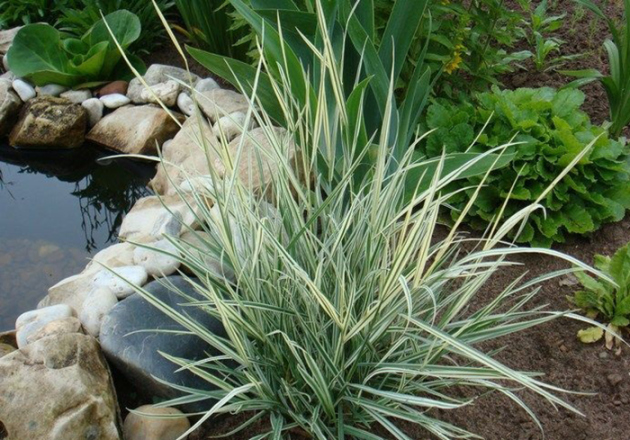








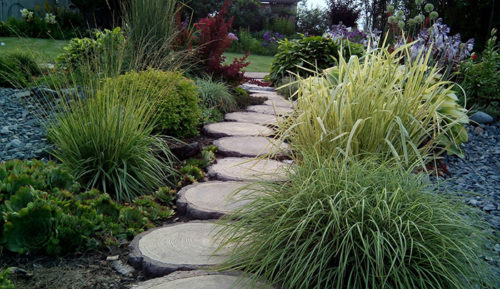




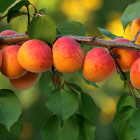


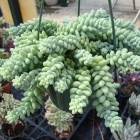
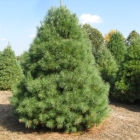

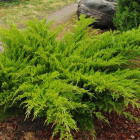

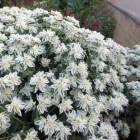


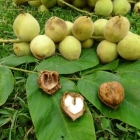
 Start a discussion ...
Start a discussion ...